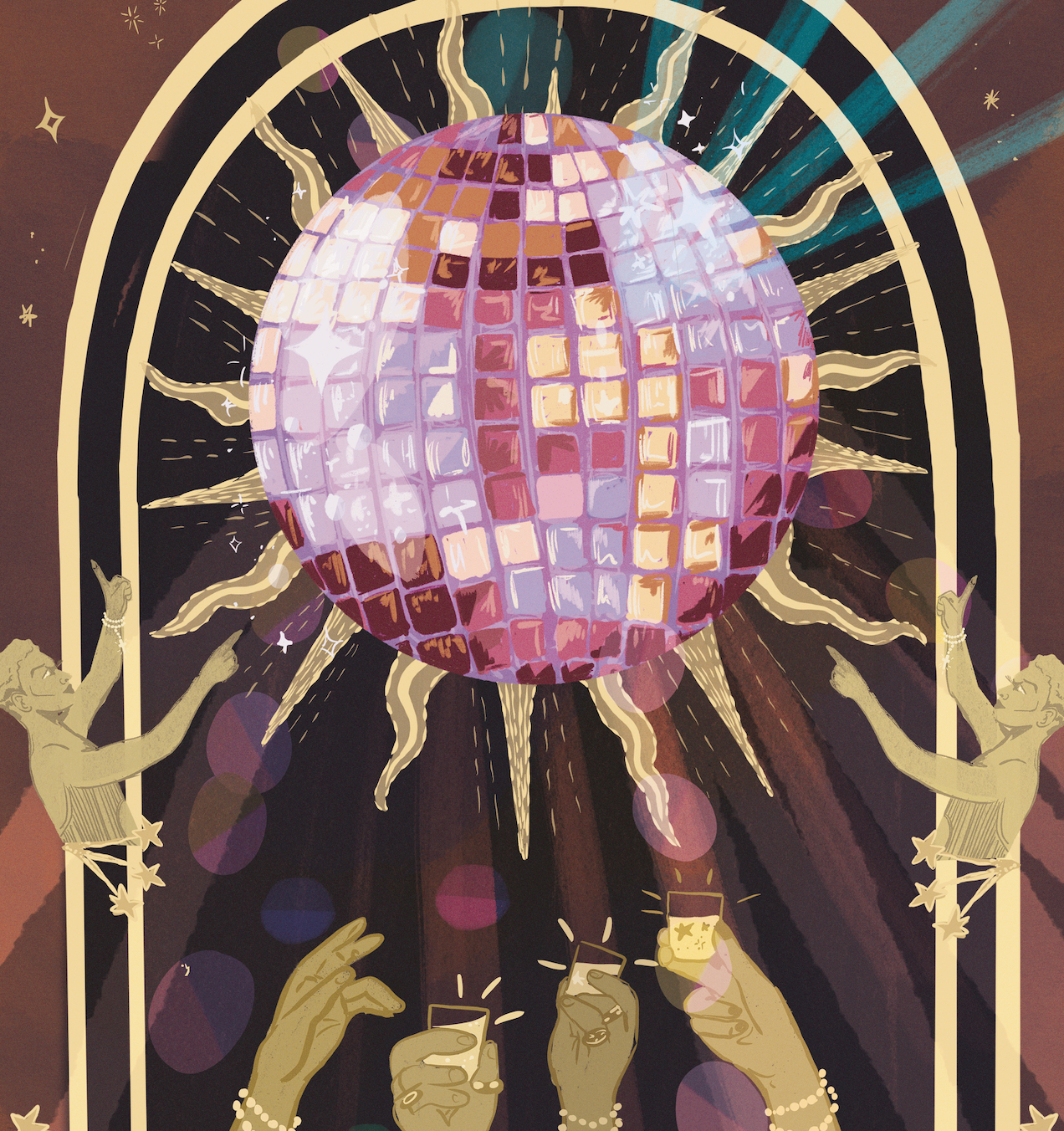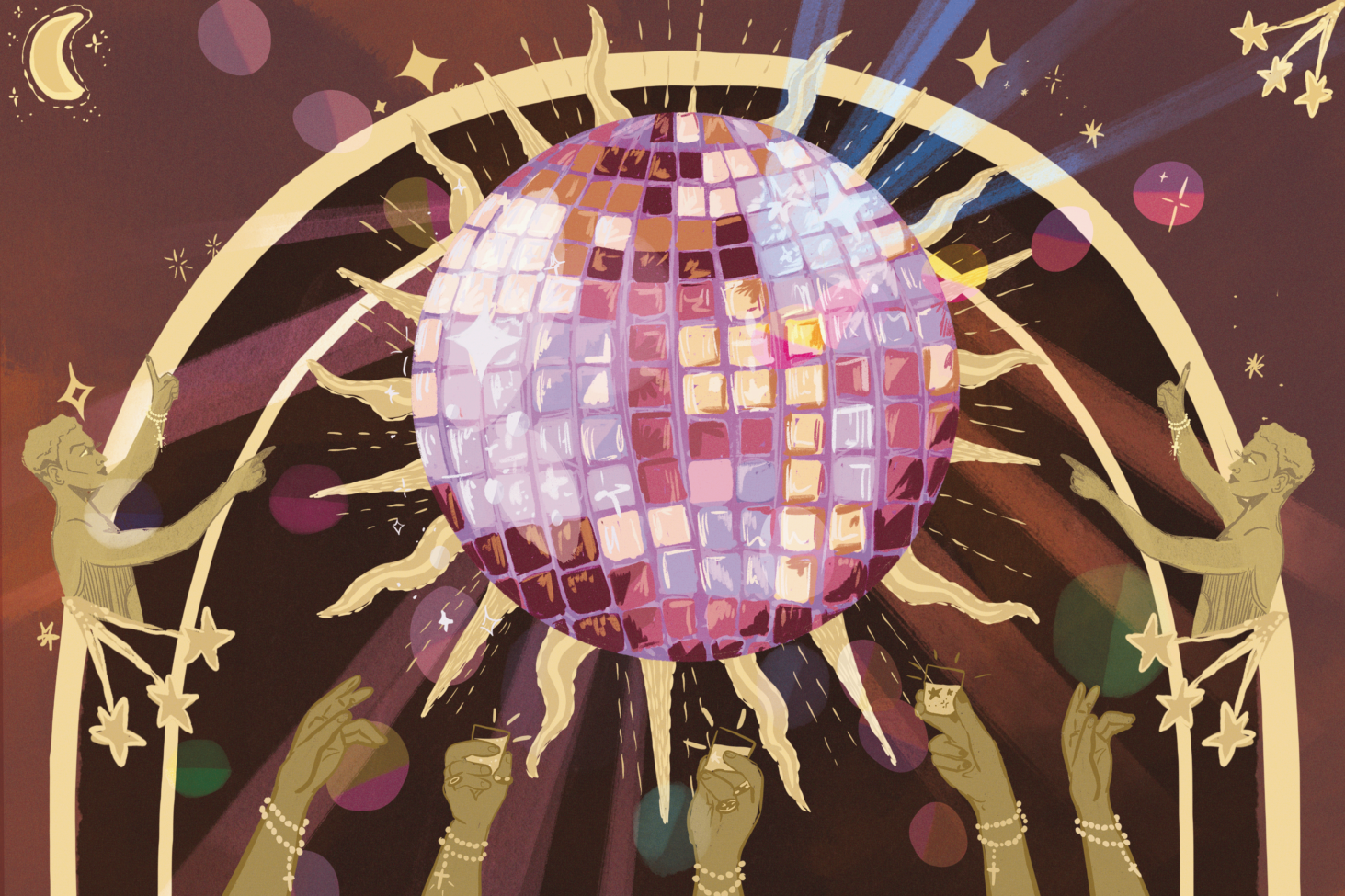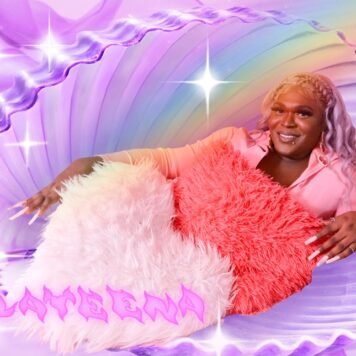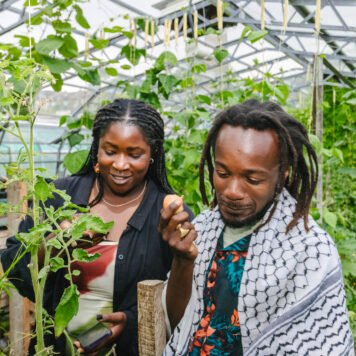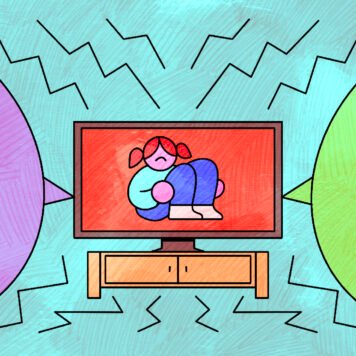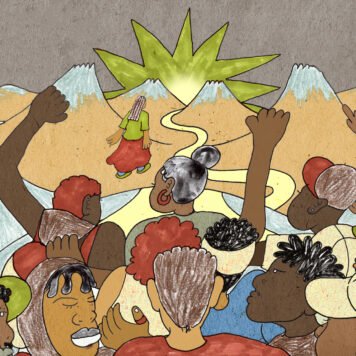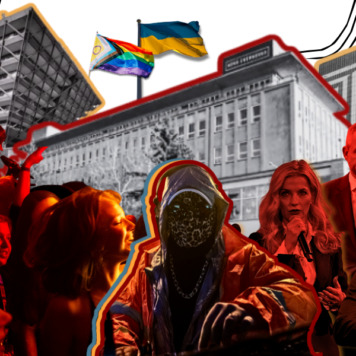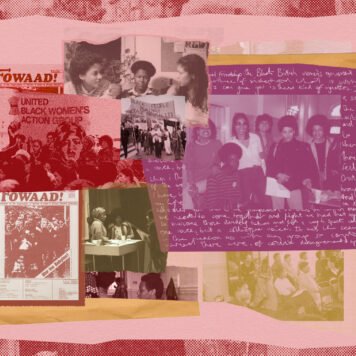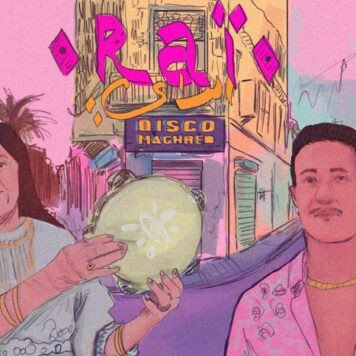“What is an art of life for what feels like the end of the world?” Mckenzie Wark asks in Raving, exploring the undisclosed locations of New York’s thriving underground queer and trans rave scene. Similarly, clubbing in London is a way of life for many, but for me? It’s the antidote to a failing way of life, or a system doing what it always intended: breaking us down until we are nothing.
Rave as ritual, rave as resistance
To club or not to club? That’s the question I ask myself each weekend as the sun dips below the horizon. I like to think I have the stamina of a thousand racehorses, the unearned confidence of a white man in marketing, and the delirious hunger to find fun wherever I go.
I once went on a date with someone who was flabbergasted by how many people said hello to me within 10 seconds of walking in (10 seconds only because the girl on the door recognised me from the week before when we both wrestled a belligerent drunk man off Dalston High Street.) But that’s what clubbing is: a dating app, a networking event, the soundtrack to your summer (thank you Charli), a community hall and always the scene of the crime. More than anything, the club is ours. A place where the alphabet mafia, the unfriendly Black hotties, and the aspiring Balamii DJs gather under the cover of darkness to sweat out whatever daytime cruelties life throws at us. The doctor is in, and they are playing donk.
My old boss wanted to cause “a bit of mischief” at our former workplace, and within five minutes of posting on Instagram, I had promoters, DJs, and strangers DMing me offering help. Decks. Venues. Voices. Bodies. Anything for a night of joyful resistance. This is the thing: the club survives on blood, sweat, tears, and the unrelenting desire to create something beautiful even when everything else is falling apart.
Last year, I found out my landlord was selling our home – a cute little house in South East London my friends and I dubbed Hun House four years ago. I was heartbroken. Making a home out of a house in London is becoming harder and harder. The same night, I queued solo outside a club, and left with five new friends, a giant bag of MDMA (sourced via a toilet queue, obviously), and a sunrise Uber XL to a mystery second location. The club became more than just an escape from bad news, it was a reminder that there are still places you can arrive feeling empty and leave feeling held.
In the middle of loss, it stitched something back together. My new friends and I danced till 10am. We waited for one another at the door when the lights came on. We made sure everyone got home safe. A year on, these people are still my friends. Because good clubbing isn’t just about good vibes – it’s about the quiet promise we make to each other. You try to kill the club, you’re also trying to kill the safety net. And the pandemic has shown us how fragile that net can be in recent years.
A COVID hangover we never healed from
Let’s not pretend: we don’t live in a post-COVID world. The virus hasn’t gone anywhere. We’ve just covered our eyes.
“What do we owe each other? How can we become other than single beings? How do we find a space between the danger of the virus and the danger of isolation?”
— Raving, McKenzie Wark
We lost people. We lost venues. We lost parts of ourselves. And even now, the conversations around harm, access and inclusion in nightlife remain patchy at best. Who gets to rave in your world? And who doesn’t?
I shot a text to my ex partner’s brother, a junior doctor: “sooooo can I quote you for this article?” He replied promptly telling me he wasn’t an expert and that he needs to do some research before going on the record. An hour later he texted me back, “ooft the science isn’t looking good. I would say while there are bits that are good for you (dancing, being with your friends) there are lots of bits that are bad (alcohol, smoking, drugs, loud noise, not sleeping).”
Well that puts the entire premise of this article in the bin: clubbing can’t heal us but it will certainly kill us, right? “No,” he goes on, “clubbing is a vital part of our culture, and clubbing is good for you in a way that isn’t as easy to measure as counting how many drunk people end up in A&E.”
Data shows that economic downturns spike high-risk drinking in lower socioeconomic groups – and we’re in one hell of a downturn right now. Following the 2008/9 recession, the rising price of alcohol curbed the rise of alcohol-specific deaths, as “affordability is directly linked to levels of alcohol harm.” However, just because alcohol is more expensive, it doesn’t mean people will stop buying it.
COVID showed us that despite the restrictions of our daily lives, there was still a sharp increase in alcohol-specific deaths across the UK, increasing by 27.4% between 2019 and 2021. This won’t be a surprise to some people, as history has shown us that making things harder to access doesn’t decrease the risk.
With You, a charity supporting young people with mental health, alcohol and drug use, has seen a 70% increase in referrals for support for alcohol, with a significant amount of staff time dealing with issues outside of recovery remit, such as housing support. This is why we ravers cry out for a public health model to be embedded into our nightlife economy. We already know criminalisation doesn’t save lives but you know what does? Harm reduction, a set of practices that destigmatise drug users and recognises the way we proactively keep each other safe.
Nightlife isn’t dead – you’re just boring
I scoff when I hear people say London nightlife is dead. No, she is not dead – she is dying, yes, but more often than not you’re just always going to the same shit nights in the same shit clubs in Hackney.
Cross the river, I beg of you! “Chasing street raves is a way to rediscover the city, to find the texture of neglected junkspace,” Wark writes. Here is where we kissed for the first time, here is where I met my best friend, here is where I took shrooms and ascended, here is where I fell in love with you, here is the toilet where I knew I wanted to do this with you for the rest of our lives.
At a work strategy meeting, I infamously described culture as the amorphous goop that binds us all together (to this day ex colleagues will bring this up) and in the same way clubbing, and clubbing safely is a vital component of our Great British Goop. From the BPOC dykes leading the way for South London music heads, to the leather adorned hotties partying past dawn at Star Lane (dress to sweat), clubbing and clubbing well is a learned communal ritual.
Ravers, performers, promoters, venue managers, bar workers, welfare teams, security staff, service providers all share the understanding that zero tolerance policies are unrealistic fantasies of those who only seek to punish, not heal. This is why the harm reduction practitioners who serve our community are integral to our scene.
Hope is not a strategy, but building a community in the club just might be
The club isn’t just a venue, it’s a vital part of our community fabric and identity. Any policy wonk will tell you: London nightlife is in decline. Buildings change, cultural artefacts of many scenes are disappearing because landlords are getting greedy, roofs flood mid dancery, but we still gather.
The booming bass of the club speakers are our siren song (the junior doctor texted me again, “oh yeah way more people should wear earplugs in the club btw!”), our call to action, our promise to one another to always seek fun and joy and love amidst the mundane horrors. It is what beckons us out of our rented accommodations, for we may never own houses to host the dinner parties of our dreams but we will always meet in the smoking area and partake in a french charcuterie (cigarettes and wine).
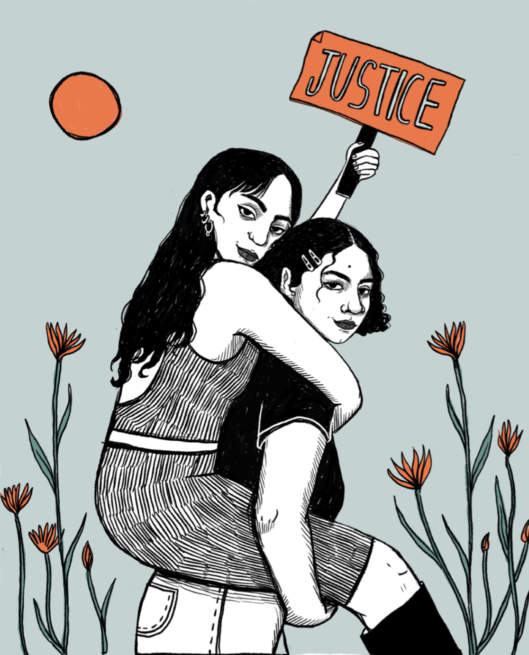
Join our mailing list
Sign up for shado's picks of the week! Dropping in your inbox every Friday, we share news from inside shado + out, plus job listings, event recommendations and actions ✊
Sign up for shado's picks of the week! Dropping in your inbox every Friday, we share news from inside shado + out, plus job listings, event recommendations and actions ✊
We gather not just for ourselves, but for the promise of a better world. Good raving is not accidental. It is built by welfare staff, bar workers, performers, promoters, ravers, and residents. I list them, again, because they are important. The club is held together by unspoken rules, community care, and a refusal to let zero-tolerance fantasies dictate how we love, party, and heal. It is a vital piece of community infrastructure. It is where we gather, where we remember ourselves, where we dare to hope for something beyond rent, bills, and burnout.
Next time you go out, remember this: here lies hallowed ground. Here is where the spirits of our ancestors come to dance with us. The club is our sanctuary, the toilets our confessionals, wristbands our rosaries. With sweaty hands thrown up in holy devotion, we spiritually pray for a salvation we may never see but we will always hope for. Make a club kid the Night Czar, and with that £132,000 salary, we’ll turn Buckingham Palace into a food bank during the day and a neon rave by night – DM for guestlist.
What can you do?
- Wear earplugs, drink water, share your drugs safely, and don’t ghost your mates on the dancefloor.
- Donate to or volunteer with harm reduction orgs like Good Night Out Campaign and Safe Only CIC.
- Push for public health models in nightlife policy – criminalisation has never kept us safe! Learn more here and here and here.
- Read: Raving by McKenzie Wark, Dance or Die: A History of Hardcore by Holly Dicker and Last Night a DJ Saved My Life: The History of the Disc Jockey by Bill Brewster and Frank Broughton. (And a cheeky plug for my substack series: ‘dispatches from the discotheque’)
- Support DIY nightlife: Show up early, stay ‘til the lights come on. Buy your ticket in advance, grab a drink (if you can), bring your friends, repost the flyer, and spread the word. Word of mouth keeps our dancefloors alive. (And on that note: I have the great honour of living with DJs – so come through to Bumpah, 29th August @ Dalston Superstore. You won’t regret it.@bumpah.ldn)
- Read more articles by Fopé HERE
